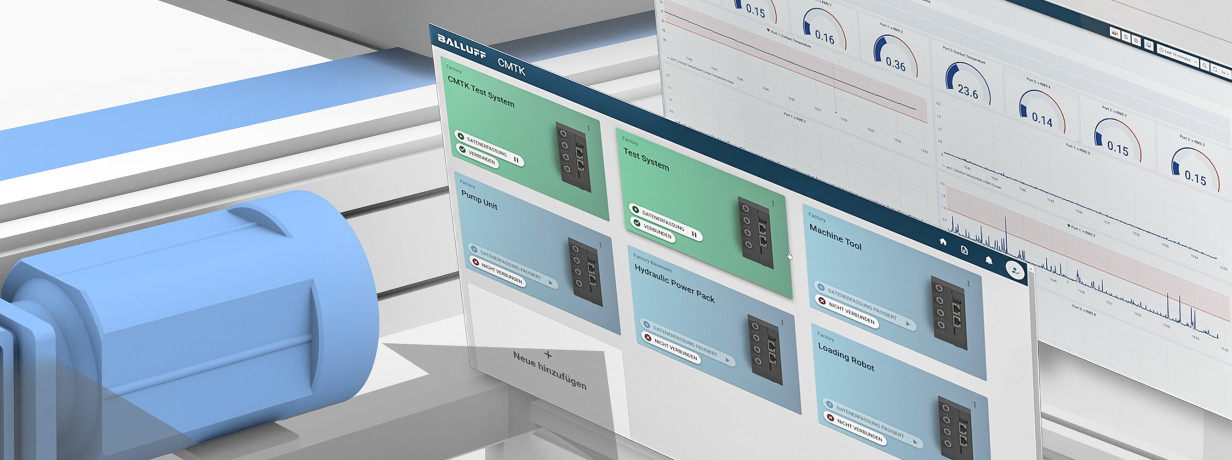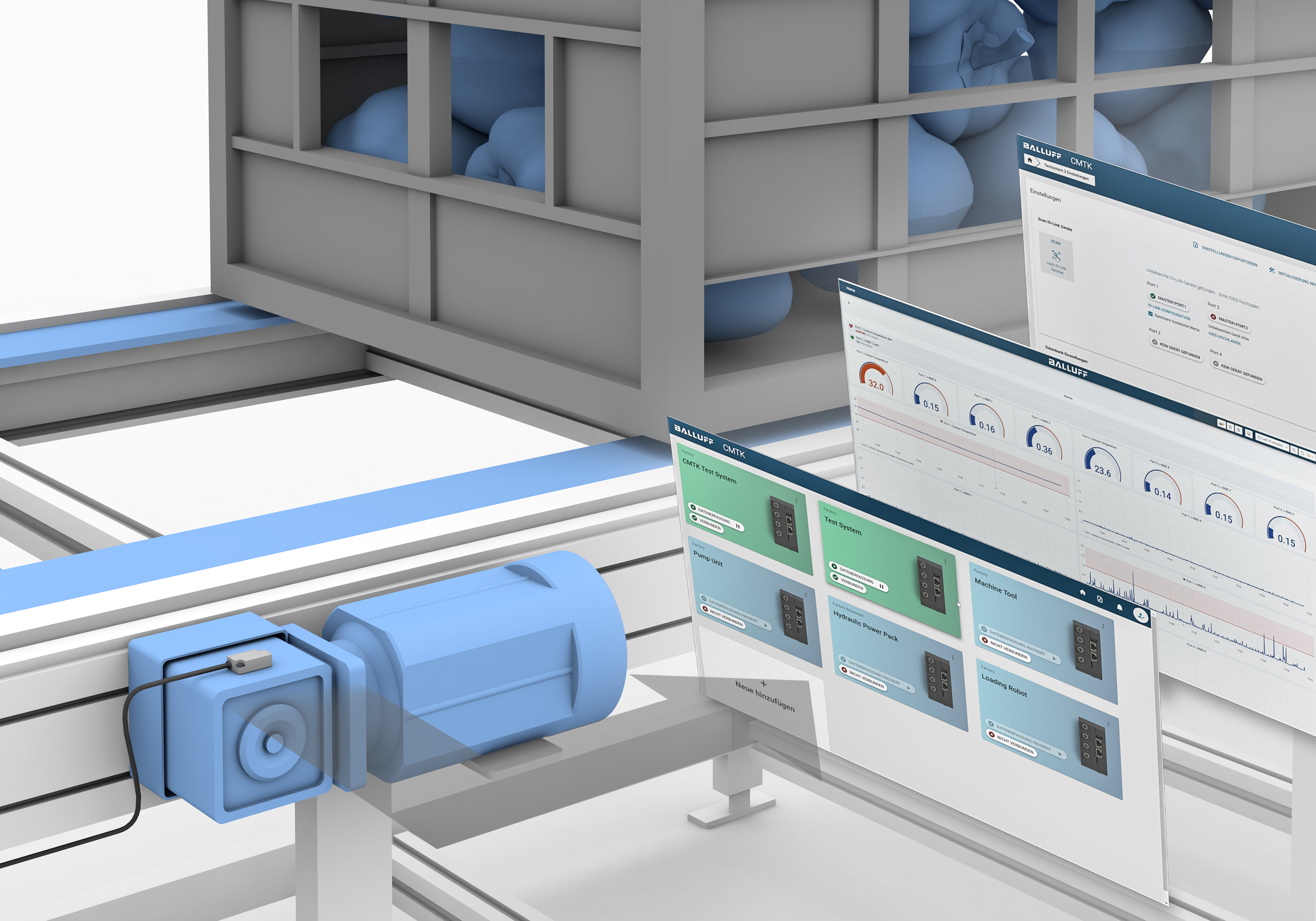Getting Started With Condition Monitoring in Intralogistics, Part 2
Learn how condition monitoring helps prevent equipment failures and keeps intralogistics operations running smoothly.

Reading Time: minutes
In my blog Maximizing Uptime: How Condition Monitoring Keeps Intralogistics Moving, Part 1, I provided an overview of the challenge of unplanned downtime in warehouse and manufacturing operations, potential equipment failures and technologies to monitor important assets. Now I’ll share practical advice for getting started with condition monitoring.
Unplanned downtime can extremely disrupt intralogistics operations, dramatically impacting throughput and Overall Equipment Effectiveness (OEE). Taking proactive steps to detect potential breakdowns of conveyors, robots, or other key equipment can be the difference between on-time and late shipments.
Practical steps for implementing a condition monitoring approach
From my experience, the best way to start with condition monitoring is to identify the critical parts of your intralogistics process and focus your monitoring efforts there first. Here are some practical steps to consider:
Identify problem areas: Walk through your facility and pinpoint the equipment that would cause the most disruption if it failed. Is it the conveyor feeding the packing stations? What is the vertical lift in your storage and retrieval system? The robot is packing shipments? These are all prime candidates for condition monitoring.
Evaluate and rank the criticality of identified equipment: Consider factors such as repair cost and time, operational losses, potential safety issues, and failure frequency. Which equipment is most or least critical to your operations?
Consider the equipment failure modes and high-risk subcomponents: What is your experience? Does the manufacturer have recommendations? Are there other facilities with similar equipment that can provide insights?
Select relevant sensors: Choose sensors for the failure modes that concern you. Vibration and temperature are great starting points for rotating equipment. You might also monitor motor current, belt tension, or environmental factors like dust, heat or moisture that could affect your system.
Select your controls architecture: Decide whether you want to integrate the condition monitoring sensors into your existing controls and network or use a separate solution to reduce the burden or impact on the installed controller. Do you need to move the data easily to the cloud or elsewhere? Consider whether real-time control response is needed, where the data should reside, and how quickly it needs to be processed.
Leverage simple integration: Use plug-and-play solutions when possible. Many modern condition monitoring sensors support IO-Link connectivity, allowing easy integration into your control system or edge gateway using standard cables. There’s no need to overhaul your existing controls architecture – just add an IO-Link master and you’re ready to collect data.
Set thresholds and alarms: Work with equipment specifications or your own baseline measurements to set warning and alarm limits. For example, you might set a vibration velocity limit based on ISO standards or the machine supplier’s recommendation. Determine how the system will alert you – whether via the HMI, an email, or a text message through IIoT software.
Start monitoring and refining: Let the data roll in and don’t be surprised if you catch issues early! For instance, it’s not uncommon to discover that one motor runs hotter than the others, prompting the need for a cooling fan. Use initial findings to refine your thresholds or add additional sensors if needed. Over time, you’ll build a clearer picture of what “normal” looks like, making it easier to spot anomalies.
 Steps to get started with condition monitoring.
Steps to get started with condition monitoring.
Following these steps can help you select the appropriate sensors and controls architecture for your application. This, in turn, can ensure the efficient, reliable, and uninterrupted operation of material handling and logistics systems by notifying operators of impending problems before they lead to unplanned downtimes or process disruptions.
Collecting data is great, but the real value lies in how you use it
Once your condition monitoring system is in place, be sure to establish a routine to review the data. This could include daily checks of the automated alerts and weekly reviews of trend logs. Over time, you’ll likely notice patterns, such as a motor’s vibration slowly increasing during the summer, or a particular conveyor may run hotter on Mondays due to heavier loads from weekend backlogs. These insights will help you schedule maintenance more effectively.
For example, if trend data suggests a gearbox may need service in a few weeks, you can plan to swap it during an upcoming scheduled downtime, avoiding unexpected disruptions. In more advanced setups, sensor data can feed into machine learning or AI models that predict precisely how many hours are left before a failure, e.g., detecting anomalies in vibrations long before common sensors or even humans may spot issues.
 Implementing condition monitoring sensors with a gateway device and visualization tools can dramatically reduce unplanned downtime for conveyors and other intralogistics equipment.
Implementing condition monitoring sensors with a gateway device and visualization tools can dramatically reduce unplanned downtime for conveyors and other intralogistics equipment.
Next steps
Adopting condition monitoring in intralogistics is a move that delivers both short- and long-term payoffs. You’ll experience fewer urgent repair surprises and gain confidence in your daily operations. Equipment operators and maintenance technicians can focus on optimizing performance instead of scrambling to put out fires. In today’s fast-paced supply chain environment, with tight delivery windows and thin margins, this approach can be a game-changer. And remember, you don’t have to implement a complex predictive maintenance system all at once. Start small, prove the value on one or two pieces of equipment, and build from there.
Comment
Popular posts
Industrial sensing fundamentals – NPN vs PNP
What is a capacitive sensor?
How do I wire my 3-wire sensors?
The basic operating principle of an inductive proximity sensor
Contact form
Do you have any questions or suggestions? We are at your disposal.
Balluff Inc.
-
8125 Holton Dr.
Florence, KY 41042

